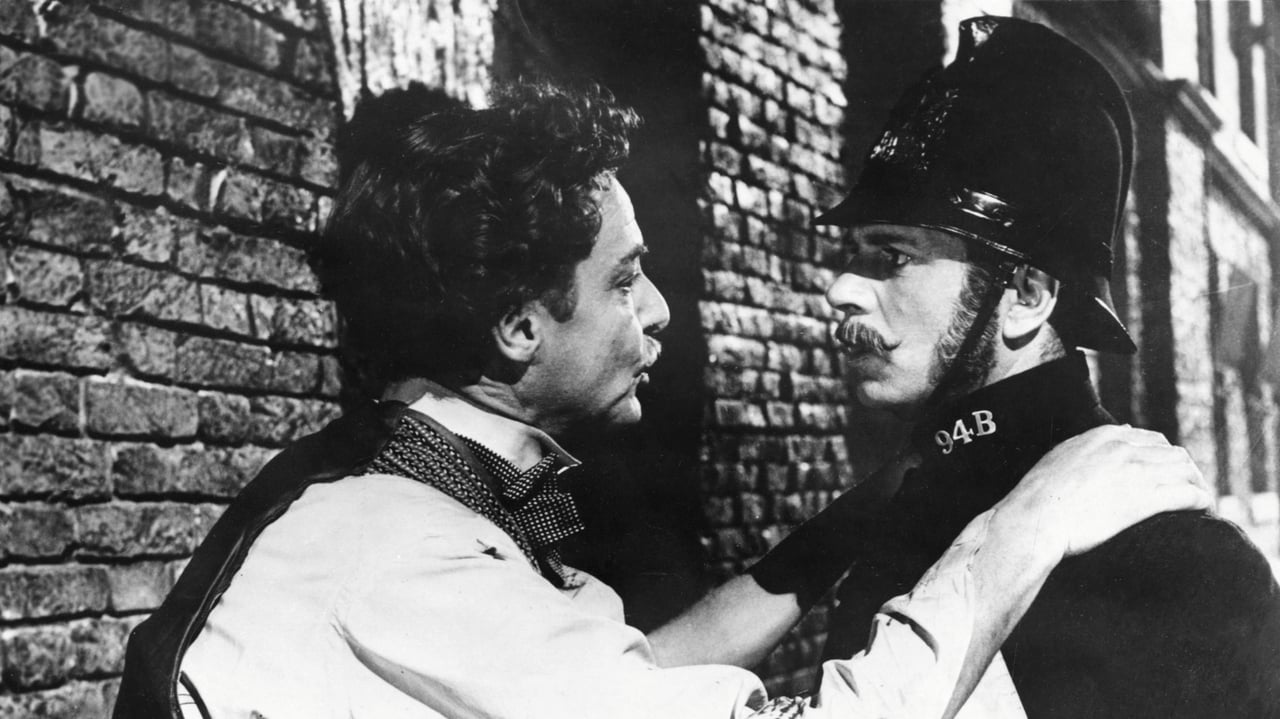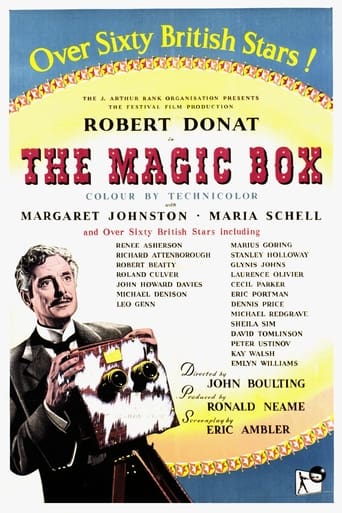



Plot so thin, it passes unnoticed.
Load of rubbish!!
It is interesting even when nothing much happens, which is for most of its 3-hour running time. Read full review
View MoreI didn’t really have many expectations going into the movie (good or bad), but I actually really enjoyed it. I really liked the characters and the banter between them.
View MoreMy wife and I enjoyed the movie immensely. As a former projectionist at Macquarie University in Sydney who was supposed to be taught 35 and even 70 mm projection I was wondering what size that film was that Willie came up with. Looked about 140mm to me!! I related to his excitement in dragging the Bobby in in the middle of the night to see his 'pieste resistance' pardon my spelling. I believe all of us who are creators of some kind or other are like Willie..all forgetful and obsessed with the project at hand. I appreciate the other reviewer in straightening it out for us about the second marriage which we knew must have happened from the beginning of the movie, but never got aired again throughout. I would be interested in the missing fifteen minutes spoken of by the other reviewer as well. I presume the movie we are now seeing is a colourised version - not sure how long ago that was re touched. I am surprised seeing the movie has been re processed that Sub titles were not added as we could have understood Willie a lot more and even some of the other very fast speakers as well. maybe down the road someone will decide to add subtitles..if they do PLEASE make it in Region 2 or 4 thanks.
View MoreThis film left me puzzled. What was the reason for the strange scene setup? Why not just present the movie in straight chronological order instead of telling the story by rather far-fetched flashbacks? The main story line is derived from a flashback that lasts for half the duration of the entire film! The story of film inventor Friese-Greene is told mainly from the viewpoint of his two successive wives, starting with his later wife. The film starts off when Friese-Greene is already approaching the end of his life when he visits his wife who has separated him. From then on, she begins to tell about the time she lived with him (when he already had put his invention into practice). By now, Friese-Greene was a bankrupt debtor who vainly tries to expand and innovate his cinematic ambitions and we see how he brings his family along with him in his downfall.The second part of the movie focuses on the start of his career as a photographer and his gradual success in creating the moving picture. This is the most intriguing part of the movie, where we witness the birth of a new era. However, it is regrettable that we already know what is going to come of our hero; this way all that we observe somehow leaves us with a bitter aftertaste. And it detracts from the overall 'suspense'.I guess that the main reason for this awkward order of life events is the fact that the interlude between the death of his first wife and his meeting his second is left undone. And this is unforgivable because this is also the period Friese-Greene brought his new invention to public attention. The recurring attention at his failed recognition lies in this period; also it would be nice to see how this totally new experience took place.What we are left with is a tolerable movie about a man who is blind with ambition and therefore also blind to the people who love him and the people who he is indebted to. The acting, camera work and soundtrack are all fine. As said, the major setback is the screenplay: deplorable.
View MoreThis is the 1951 feature made by the British film industry to celebrate the festival of Britain. The film stars a virtual who's who of all the famous British cinema actors of that time, and one of the fun things about this film is trying to identify all of them as they pop up in various cameo roles. The story is the biography of William Friese- Greene, who this film claims invented the motion picture camera and projector. Edison and Lumiere are casually acknowledged as also being motion picture pioneers, but Friese-Greene is claimed to have had the first intermittent mechanism (presumably the Maltese cross) used in today's cinema projectors. It also claims that he invented the biocolour process, where color motion pictures are produced by rotating two color filters in front of the camera and projector (KinemaColour). The lead role is beautifully played by Robert Donat as the quiet intense inventor obsessed with producing moving photographs, and his wife is competently played by Maria Schell. Also appearing in cameo roles are Michael Redgrave, Richard Attenborough, Peter Ustinov, Stanley Holloway, Michael Dennison, the great Dennis Price, the beautiful Glynnis Johns and her father Mervyn Johns, the eccentric Joyce Grenfell, the wonderful Margeret Rutherford, and a host of others too long to mention. The most famous cameo is by Sir Laurence Olivier, as the astonished policeman who witnesses Friese-Greene's first triumph, the projection of moving images of Hyde Park on an improvised sheet screen. This is the most remembered scene of the film, and Friese Greene's excitement at this event reminded me of my own excitement when I first turned the handle on my first Pathescope 9.5mm projector! The film is of great interest to film collectors and movie buffs, containing beautiful shots of old wood and brass magic lanterns and early movie equipment. There are many wonderful scenes, such as the Victorian photo studio where they show customers having to stand absolutely still for 30 seconds to get their photo taken! The film was produced by Roy Boulting, and the beautiful Victorian settings and costumes are sumptuously photographed by Jack Cardiff. My family and friends really enjoyed this movie, it is low key almost like a BBC period drama, but if you are a film collector you will love it. We take the showing of films in our homes for granted these days, and it easy to forget the real struggle by inventors such as Friese- Greene to achieve what seemed impossible at the time. American audiences will of course have to (at least temporarily) suspend their belief that Edison was the sole inventor of the motion picture camera ( in fact Edison was primarily a business man and entrepreneur who copied many of the motion picture concepts developed by Lumiere in France) This film is very rare indeed. I don't think it exists on VHS or DVD,(certainly not in the USA), however Super 8mm film prints do exist, so if you find an S8 print grab it! My particular super 8 print is a 2400 ft Agfa color print, pin sharp with beautiful rich colors and great contrast. The mono magnetic track sound quality is very good for a film of 1951 vintage. Highly recommended, if you can find it.
View MoreThe Magic Box documents Friese-Greene's obsession to (be the first to) produce moving images using a continuous strip of photographic film. Robert Donat as Friese-Greene as usual gives a professional performance as we follow his endless trials - in two senses. Yet one short scene lifts the film above being just a parade of Britain's acting talents in a worthy centennial celebration of F-G's life. Arguably the most illustrious actor of his generation, Laurence Olivier, has an apparently minor part as a London copper called in by an over-excited Friese-Greene to witness his first successful projection of a moving image. It is though through Olivier's star performance that we are able to share the extraordinary experience of being only the second person in the world to see moving pictures. They surely knew when casting that this was the star role.Friese-Greene is buried at the famous Highgate Cemetery East in North London. The obelisk with his name can be seen from the road about 100 yards down from the entrance. The inscription is simple "William Friese-Greene Inventor of Cinematography". The premise of "The Magic Box" was exactly that yet sadly the man, the film and the claim itself have in recent years received the most shabby treatment of all in the country which produced them. Friese-Greene's patent was for using perforated celluloid film moving at up to 10 frames per second - quite enough to give an impression of movement. That, but using 16 frames per second, became the industry standard for silent film.
View More